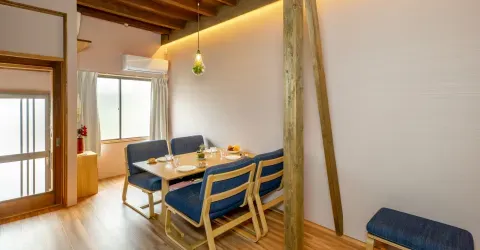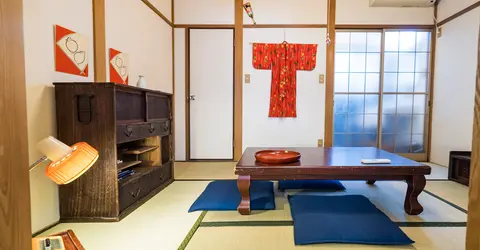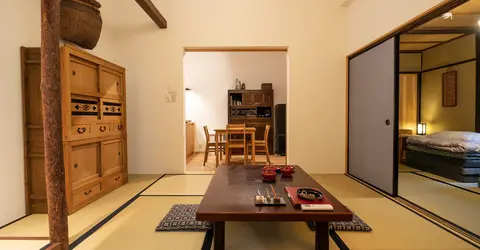Insho Domoto Museum
Read an article about Kyoto's Insho Domoto Museum. The Insho Domoto Museum of Fine Arts is located in northwestern Kyoto.
Insho Domoto Museum of Fine Arts 堂本印象美術館

The Insho Domoto Museum is in north western Kyoto, between the Golden Pavilion (Kinkakuji Temple) and Ryoanji Temple on the road west, that winds through pleasant forests on its way to Ninnaji Temple and beyond to Hirosawa Lake, Daikakuji Temple, Adashino Nenbutsuji Temple and eventually Arashiyama.
The facility features the works of Kyoto-born Insho Domoto (1891-1975), who was a great Nihonga painter.
Insho Domoto used various media in his art including sumi-e ink paintings and paintings on fusuma sliding doors, the latter being seen in the Koshibo, at Toji Temple in the south of Kyoto, and at many other temples in the Kansai area.
The museum was created by Insho Domoto himself, in 1966, designing both the inside and the striking exterior of the building.
The Insho Domoto Museum now belongs to Kyoto Prefecture, who took over the running of the museum in 1991.
 Insho Domoto Museum, Kyoto
Insho Domoto Museum, Kyoto Insho Domoto Museum Garden, Kyoto
Insho Domoto Museum Garden, Kyoto
Insho Domoto Museum of Fine Arts (insho-domoto.com)
26-3 Kamiyanagi-cho
Hirano Kita-ku
Kyoto
603-8355
Tel: 075 463 0007
9.30 am - 5 pm (Last Admission at 4.30 pm) Closed Mondays. Adults: 500 yen.
 Insho Domoto Museum, Kyoto
Insho Domoto Museum, Kyoto
Insho Domoto Access
The Insho Domoto is across the street from the Main Gate of the Kinugasa Campus of Ritsumeikan University.
From JR/Kintetsu Kyoto Station take bus number 50. From Sanjo-Keihan, buses 12, 15, 59 go to the museum. Get off at Ritsumeikan Daigaku-mae and cross the street.
The Insho Domoto Museum of Fine Arts is close to Kinkakuji, Ryoanji, Toji-in and Ninnaji temples as well as the Ritsumeikan Peace Museum and Waratenjin Shrine.
 Insho Domoto Museum, Kyoto
Insho Domoto Museum, Kyoto Insho Domoto Museum, Kyoto
Insho Domoto Museum, Kyoto





























